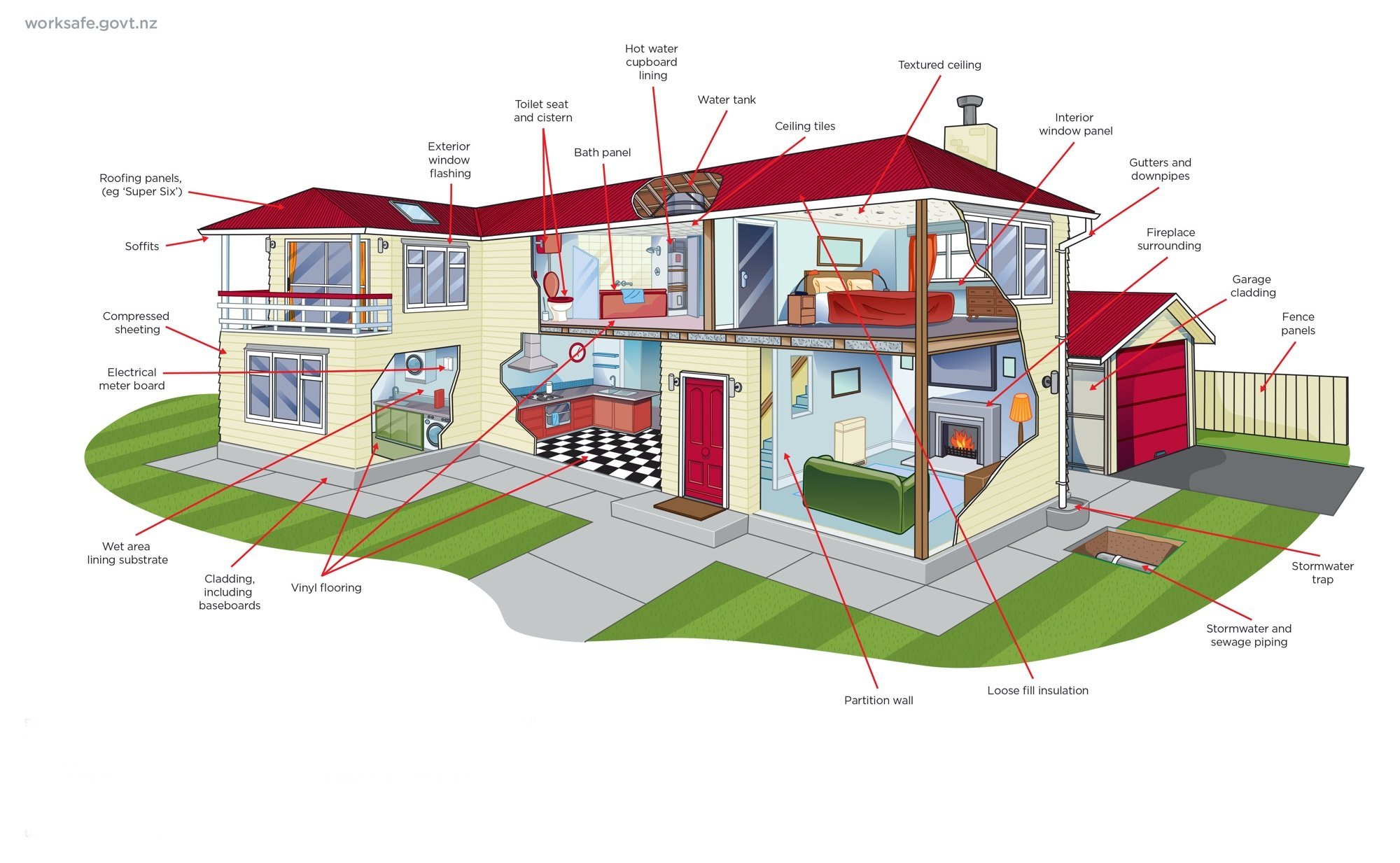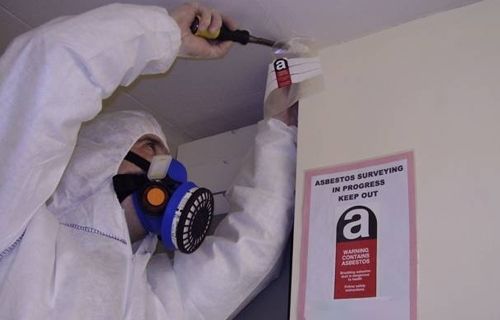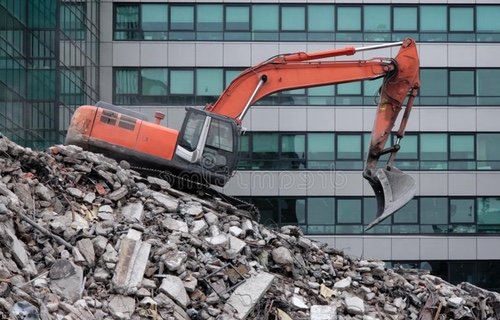About asbestos
Asbestos related diseases are the number one killer in New Zealand workplaces.
Despite increased awareness of it’s dangers, around 170 people die every year as a result of exposure to asbestos, Worse, the diseases associated with asbestos can take anywhere up to thirty years or more to become evident, and once established there are very few treatment options available.
What is asbestos
Asbestos is a naturally occurring mineral rock fibre that has been mined for thousands of years. It has many fantastic properties which have resulted in it’s widespread use in the building industry. In the last century it was used for reinforcing concrete cladding and roofing, where it’s fibrous strands added flexibility and reinforcement in equal measure. It has also been used for it’s insulating properties, as fireproofing, electrical insulation, pipe lagging, bonding agent and in many other building products.
There are at least 3,500 products known to have contained asbestos in some form, and the list continues to grow as more older products are discovered.
Having said that it has many amazing properties, it is also a killer, and has now been completely banned in New Zealand.
If your house was built between the 1920s and the 1990’s there is a very high chance that it contains asbestos in one or more areas.


Where is it found?
Asbestos can be found in many places in the average New Zealand home, especially if it was built before the 1990s. Here you can see some of the places where it can be found.
If you are planning to refurbish, extend or rebuild your property you should consult a professional to determine if you are at risk.
F.A.Q.
What is asbestos?
Asbestos is a group of six naturally occurring rock fibre minerals composed of thin, needle-like fibers. It has been used widely in the building industry for many years for its outstanding insulating and strengthening properties. It is now banned in many countries, including New Zealand.
What are the health risks of asbestos?
Long term or significant exposure to asbestos fibres can lead to a range of deadly diseases, including asbestosis and mesothelioma, Around 170 people die each year in New Zealand from these diseases.
Why was asbestos so popular in the building industry?
In many ways, asbestos was considered a dream material for the building trade. It’s an excellent insulator, can be used to reinforce cement cladding and roofing, It’s highly insulating, both for heat and electricity, so it was used extensively for both. It repels water, it fireproof and it adds strength and flexibility to almost anything you add it to. It has been identified in over 3,500 building products.
Does my property have it?
If your property was built between the 1920s and the 1990s it’s very likely to contain asbestos in one or more areas. You’ll likely find it in textured ceiling coatings, concrete roofs or decramastic tiles, insulation in the roof or on pipes, cladding and soffits, electrical boards, vinyl flooring or concrete deck flooring, chimney flues and fireplaces.
What is an asbestos survey, and do I need one?
An asbestos survey is an effective way to help you manage asbestos in your property by providing accurate information about the location, amount and type of any asbestos containing materials (ACMs). If you are a residential property owner and are considering renovating, rebuilding or demolishing your property you should have a qualified professional provide you with one. If you are paying someone to do building work for you, it is a legal requirement.
If you own a commercial property you are required to have an asbestos survey and management plan if the building was constructed before 2000.
Surveys come in several forms: Management, Renovation and Demolition. They range in complexity and how intrusive they are, and you generally get what you pay for like most things in life. Ask us for advice on what type of survey you will need.
How is asbestos removed?
The asbestos removal industry is tightly regulated, with removal companies and their supervisors requiring a license to remove asbestos containing materials. A reputable removals company can safely remove asbestos without releasing any fibres into the atmosphere and ensure it is disposed of safely at a licensed disposal facility.
What’s the difference between A Class and B Class asbestos?
There are two states that asbestos can be found:
Friable asbestos is asbestos that can be easily crumbled by hand in its original form. This is considered to be A Class, and includes products such as textured (popcorn) ceilings, pipe lagging, the paper backing to vinyl flooring and certain insulation panels such as those that may be found in fire proof doors or around chimneys.
Non Friable asbestos is asbestos that has been bound within a stable product and does not readily release fibres into the atmosphere. This type of asbestos is usually considered to be B Class and includes concrete cladding, baseboards, concrete fencing, corrugated concrete roofs, electrical backing boards and hard plastic floor tiles.
Do I have to remove it?
If the asbestos product is in good condition and is either painted or encapsulated, it is usually safe to leave undisturbed. If you’re renovating, rebuilding or demolishing your property you will need to seek the services of a professional. If you have any questions or concerns, give us a call, we’d be happy to give you advice free of charge.
Related Services
Surveying
If you’re about to embark on renovations or building work on your property you need to employ an Asbestos Surveyor to determine if you have asbestos in your property. If you own a commercial property you are required to have an asbestos Survey and a Management Plan by law.
Demolition
Demolition
Morecroft Projects offers a comprehensive demolition service, providing a personally tailored and cost effective solution for your rebuild. Whether it’s a partial demolition or full removal, we can help realise your plans efficiently and on time
Advice
If you just need a friendly voice to discuss your home or project we’re here for you. We’ve been doing this for over three decades, and there’s not much about asbestos that we don’t know. Call or contact us today if there’s anything you’d like to discuss.




